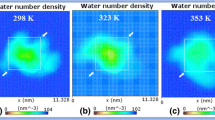Abstract.
Recent years have witnessed an explosion of sequence and structural information for proteins from hyperthermophilic and thermophilic organisms. Complete genome sequences are available for many hyperthermophilic archaeons. Here, we review some recent studies on protein thermostability along with work from our laboratory. A large number of sequence and structural factors are thought to contribute toward higher intrinsic thermal stability of proteins from these organisms. The most consistent are surface loop deletion, increased occurrence of hydrophobic residues with branched side chains and an increased proportion of charged residues at the expense of uncharged polar residues. The energetic contribution of electrostatic interactions such as salt bridges and their networks toward protein stability can be stabilizing or destabilizing. For hyperthermophilic proteins, the contribution is mostly stabilizing. Macroscopically, improvement in electrostatic interactions and strengthening of hydrophobic cores by branched apolar residues increase the enthalpy change between the folded and unfolded states of a thermophilic protein. At the same time, surface loop deletion contributes to decreased conformational entropy and decreased heat capacity change between the folded and unfolded states of the protein.
Similar content being viewed by others
Author information
Authors and Affiliations
Additional information
Received 28 February 2001; received after revision 26 March 2001; accepted 27 March 2001
Rights and permissions
About this article
Cite this article
Kumar, S., Nussinov, R. How do thermophilic proteins deal with heat?. CMLS, Cell. Mol. Life Sci. 58, 1216–1233 (2001). https://doi.org/10.1007/PL00000935
Issue Date:
DOI: https://doi.org/10.1007/PL00000935




